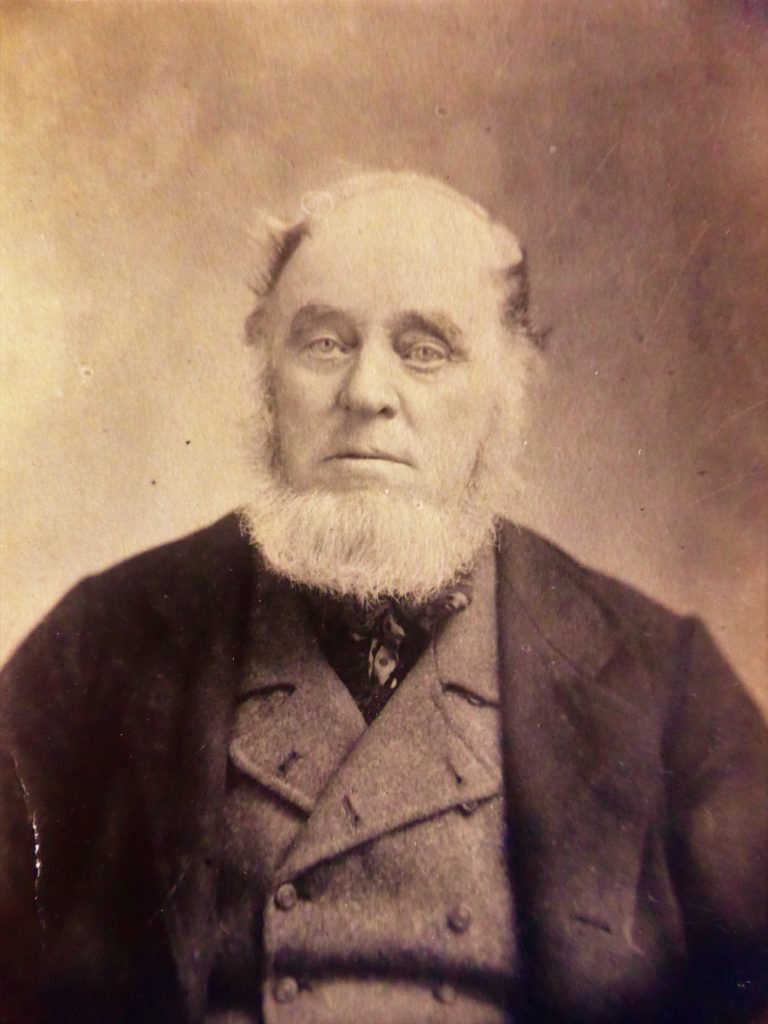
John Wheatley was one of the most extraordinary men who has lived in Bluntisham
Early years
Wheatley was born in Earith in 1812 and little is known of his early years except that his mother was a widow with many children to bring up, and although very poor was able to give him some education at a dame school.
His interest in natural history was first stimulated when, as a boy, he watched kites wheeling for hours on motionless wings over the Heath, where he had been sent to mind sheep. He was apprenticed to a carpenter and in 1829 he came to Bluntisham, where he remained as village carpenter for the rest of his life.
Astronomer
At the age of 25 he read Dick’s “Solar System” which inspired him with a passion for astronomy. His first task was to construct a telescope. This he achieved by grinding lenses from the bottoms of glass tumblers to a focal length of 6 feet with a 1 inch object glass that gave a magnification of 72 times. No tube was used for this first telescope; the lenses being simply fastened to a metal rod. For this type of telescope a reflector was also necessary. At that time a way of silvering glass was unknown and reflectors were cast in metal and ground to shape.
After failing to find a Foundry which could successfully undertake the casting, Wheatley then decided to attempt it himself. Having obtained sufficient copper, tin and silver, he hired the Waldock Foundry at St. Ives for three days. The copper was first melted and the molten tin and silver added to form an alloy more brittle than glass. After a second melting it was poured into a mould and left to cool for three days. Waldock moved the mould in ignorance and cracked the speculum before it was set. Wheatley, in disgust, put his metal into a sack and returned home.
In 1865, Wheatley had a furnace built in his own yard at Bluntisham. Here he made a successful casting which he covered up with many layers of dry earth and sawdust. This was allowed to cool gradually for many weeks, thin layers of the covering being taken off every few hours during both day and night. This method proved completely successful. While the metal was cooling he made a machine for grinding the reflector which then occupied all his spare time for another six weeks. At the end of that time he had a perfect 18 inch reflector telescope with an 18 foot focus.
Wheatley made several more telescopes and at one time had the fourth largest ever made. He was now in touch with the leading astronomers of the day such as Herschel and Lassell and made many important observations. Among these was the re-discovery of Belaugh’s Comet.
In those days it was the custom to confine most building operations to the summer months and in some years Wheatley would close down his business completely from the end of October until April in order to devote the whole of his time to his experiments.
Musician
Wheatley was an accomplished musician, and he even made the instruments with which to produce his music; a fine quality organ and cello.
Christian Leader
In spite of his absorption of the latest scientific theories, many extremely radical, Wheatley never faltered in his Christian faith. He loved to reconcile ingeniously, and to his own complete satisfaction, the record of Genesis with the latest scientific theory of the Creation. His faith was a practical one and for many years he was a member of Bluntisham Baptist Church and a teacher and superintendent in the Sunday School. Even here he demonstrated his craftsmanship in building two beautiful scale models of the Temples of Solomon and Herod for use in the school.
Craftsman
Wheatley took great delight and interest in building the second Bluntisham Meeting House and Sunday School. Every piece of timber had to pass his exacting scrutiny and none with the slightest defect was used. All the carving was done by his own hand and, in the fashion of the mediaeval mason, some of the carved heads in the School are undoubted likenesses of his friends and himself.
Among many models that he made was one of a farmstead. This was sent to the 1851 Great Exhibition and was awarded a silver medal.
Character
Perhaps because he was childless, he loved, and was loved by all the village children, and both in and out of Sunday School undoubtedly influenced many of them for good. He was often seen as obstinate and opinionated, but these were some of the same qualities that enabled him to achieve the results he did, although lacking education, money and patronage. There is little doubt that had he possessed these he might have reached a high place in the scientific world of his day.
Much of his work is now lost or its whereabouts unknown but a little still remains in the village. There are examples of his work in the Baptist Church.





You must be logged in to post a comment.